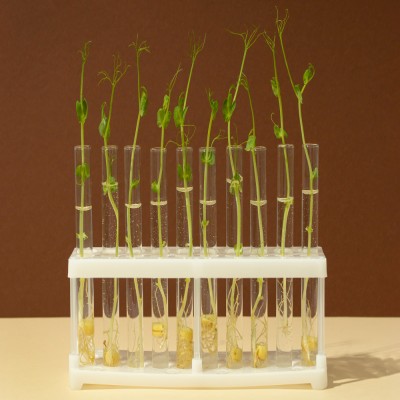In the quest for sustainable agriculture and optimal crop yields, plant biostimulants have emerged as promising tools for enhancing plant vitality and resilience. These natural or synthetic substances stimulate plant growth, improve nutrient uptake, and enhance stress tolerance, ultimately leading to healthier plants and higher yields. In this article, we’ll delve into the world of plant biostimulants, exploring their mechanisms, benefits, and applications in modern agriculture.
Understanding Plant Biostimulants:
Plant biostimulants products are defined as substances or microorganisms that, when applied to plants or the rhizosphere, stimulate natural processes to enhance nutrient uptake, nutrient efficiency, tolerance to abiotic stress, and crop quality traits. Unlike traditional fertilizers, which primarily provide essential nutrients to plants, biostimulants exert their effects through diverse mechanisms, including hormonal regulation, microbial interactions, and biochemical pathways modulation.
Mechanisms of Action:
1. Hormonal Regulation:
Biostimulants contain natural or synthetic compounds that mimic or regulate plant hormones such as auxins, cytokinins, and gibberellins. By modulating hormone levels and signaling pathways, biostimulants promote cell division, elongation, and differentiation, leading to increased root and shoot growth, improved flowering, and fruit set.
2. Nutrient Uptake Enhancement:
Certain biostimulants facilitate the uptake and translocation of essential nutrients by plants, making them more available and accessible for metabolic processes. By enhancing nutrient absorption and assimilation, biostimulants optimize nutrient use efficiency and reduce nutrient losses, resulting in improved plant nutrition and vigor.
3. Stress Tolerance Enhancement:
Biostimulants can enhance plant tolerance to various abiotic stresses such as drought, salinity, heat, and cold. They stimulate the synthesis of stress-responsive proteins, osmolytes, and antioxidants, strengthening plant cell membranes, scavenging reactive oxygen species, and maintaining cellular homeostasis under adverse conditions.
4. Microbial Interactions:
Some biostimulants promote beneficial interactions between plants and soil microorganisms, such as rhizobia, mycorrhizae, and plant growth-promoting rhizobacteria (PGPR). These microorganisms contribute to nutrient cycling, biological nitrogen fixation, and disease suppression, fostering plant health and resilience in the rhizosphere.
Benefits of Plant Biostimulants:
1. Improved Plant Growth and Development:
Biostimulants stimulate plant growth and development, resulting in increased biomass accumulation, enhanced root and shoot growth, and improved crop architecture. They promote vigorous vegetative growth, early flowering, and fruit set, leading to higher yields and better-quality produce.
2. Enhanced Nutrient Use Efficiency:
By optimizing nutrient uptake, translocation, and utilization, biostimulants improve nutrient use efficiency in plants, reducing the dependency on synthetic fertilizers and minimizing nutrient losses to the environment. This sustainable approach to nutrient management promotes soil health, reduces environmental pollution, and conserves natural resources.
3. Increased Stress Tolerance:
Plant biostimulants help plants cope with environmental stresses, such as drought, salinity, and temperature extremes, by enhancing stress tolerance mechanisms and mitigating stress-induced damage. They enable plants to maintain physiological functions, conserve water, and sustain growth under challenging conditions, ensuring crop productivity and resilience.
4. Enhanced Crop Quality and Marketability:
Biostimulants improve the nutritional quality, flavor, and shelf life of fruits, vegetables, and other crops, enhancing their marketability and consumer appeal. They enhance color, texture, and taste attributes, resulting in higher-quality produce that commands premium prices in the marketplace.
Applications of Plant Biostimulants:
Plant biostimulants find applications across a wide range of crops, including field crops, fruits, vegetables, ornamentals, and turfgrass. They can be applied through various methods, including foliar sprays, seed treatments, soil drenches, and fertigation systems, depending on the crop, growth stage, and specific objectives. Integrating biostimulants into comprehensive crop management programs can help growers maximize their benefits and achieve sustainable agriculture practices.
Conclusion:
Plant biostimulants offer a promising avenue for enhancing plant vitality, improving crop yields, and promoting sustainable agriculture. By harnessing their diverse mechanisms of action, growers can optimize plant growth, nutrient uptake, and stress tolerance, leading to healthier plants and higher-quality yields. As the agricultural industry seeks innovative solutions to meet the challenges of food security, environmental sustainability, and climate change, plant biostimulants are poised to play a pivotal role in shaping the future of farming. Embracing these natural and sustainable tools can help farmers cultivate resilient crops, protect natural resources, and ensure a more sustainable and bountiful harvest for generations to come.













